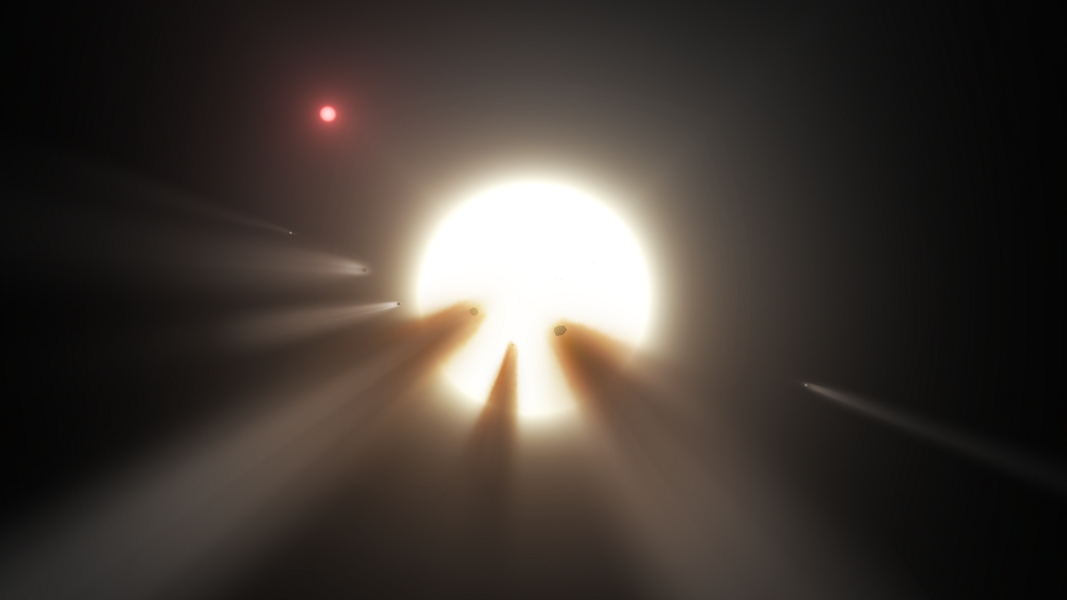Best Space Stories of the Week – Dec. 13, 2015

Space.com delves into surprise salt on Ceres, a lack of alien lasers, a successful space delivery and a spectacular upcoming meteor shower in its top stories of this week.
Planet imposters
A new study suggests that more than half of the many potential exoplanets discovered by NASA's Kepler space telescope are false positives. The researchers followed up on 129 of the telescope's largest identified planets and found that many were actually stars. [Full Story: Half of Kepler's Giant Exoplanet Candidates Are False Positives: Study]
Venus probe Akatsuki's second chance
Five years after an engine failure ruined its first attempt, Japan's Akatsuki spacecraft has managed to maneuver into Venus's orbit. The craft transferred from orbit around the sun to Venus using only its small altitude-control thrusters. [Full Story: Success! Japanese Spacecraft Arrives at Venus 5 Years After 1st Try]
Flare scare
New research reveals that stars like the sun can release powerful superflares of high-energy radiation a thousand times stronger than the sun's routine solar flares. Such a flare in Earth's sun is extremely unlikely — but if it happened, it would extensively harm navigation, radio communications and power grids on the planet. [Full Story: Sun Could Unleash Devastating 'Superflare']
Get the Space.com Newsletter
Breaking space news, the latest updates on rocket launches, skywatching events and more!
Ceres' surprising salt
Mysterious bright spots on the dwarf planet Ceres might be made of hydrated magnesium sulfates, similar to the substance often sold as Epsom salt on Earth. The new observations come from NASA's Dawn spacecraft, which has been orbiting the dwarf planet since March. [Full Story: Mystery Solved? Ceres' Bright Spots Likely Made of Salt]
Space cargo delivery a success
The Cygnus supply spacecraft successfully arrived at the International Space Station early in the morning Dec. 9, bringing essential supplies and research tools to the astronauts in the orbiting lab. NASA astronauts grappled the automated craft with the on-board robotic arm before berthing it with the station. [Full Story: Orbital ATK's Private Cygnus Supply Ship Arrives at Space Station]
A record-breaking icy speck
New photos from NASA's New Horizon's mission, now out beyond Pluto, spotlight a tiny object in the ring of icy bodies in the solar system's outer reaches called the Kuiper belt. The photos are the closest-ever look at any small body in orbit there. [Full Story: Pluto Probe Snaps Record-Breaking Photos of Frigid, Faraway Object]
Structure seems lacking in alien lasers
Scientists have found no evidence of laser or radio communications coming from a faraway star whose strange brightening and dimming had been suggestive of orbiting alien megastructures. More likely, something like comet fragments temporarily blocked the star's glow. [Full Story: No Laser Signals Detected from 'Alien Megastructure' Star]
Stars that stay forever young
New observations from the Hubble Space Telescope verify how vampire-like "blue straggler stars" siphon fuel from their partners in binary orbit. The partner stars wither to white dwarfs while the stragglers themselves look unusually young. [Full Story: Secrets of Vampire Stars Revealed in Hubble Telescope Data]
20 years of sun surveillance
The Solar and Heliospheric Observatory has been scrutinizing the sun for 20 years now, bringing new insight to the sun's structure (plus spotting more than 3,000 comets in space). The long-lasting mission was originally scheduled for just 3 years. [Full Story: Sun-Watching Observatory Celebrates 20 Stellar Years in Space (Video)]
Brilliant meteor shower on its way
The spectacular Geminid meteor shower will reach peak visibility on the nights of Dec. 13 and 14. Experts are saying the brilliant sight will be the best meteor shower of 2015. [Full Story: Geminid Meteor Shower, Best of the Year, Peaks Sunday: Watch It Live]
Email Sarah Lewin at slewin@space.com or follow her @SarahExplains. Follow us @Spacedotcom, Facebook and Google+. Original article on Space.com.
Join our Space Forums to keep talking space on the latest missions, night sky and more! And if you have a news tip, correction or comment, let us know at: community@space.com.

Sarah Lewin started writing for Space.com in June of 2015 as a Staff Writer and became Associate Editor in 2019 . Her work has been featured by Scientific American, IEEE Spectrum, Quanta Magazine, Wired, The Scientist, Science Friday and WGBH's Inside NOVA. Sarah has an MA from NYU's Science, Health and Environmental Reporting Program and an AB in mathematics from Brown University. When not writing, reading or thinking about space, Sarah enjoys musical theatre and mathematical papercraft. She is currently Assistant News Editor at Scientific American. You can follow her on Twitter @SarahExplains.









